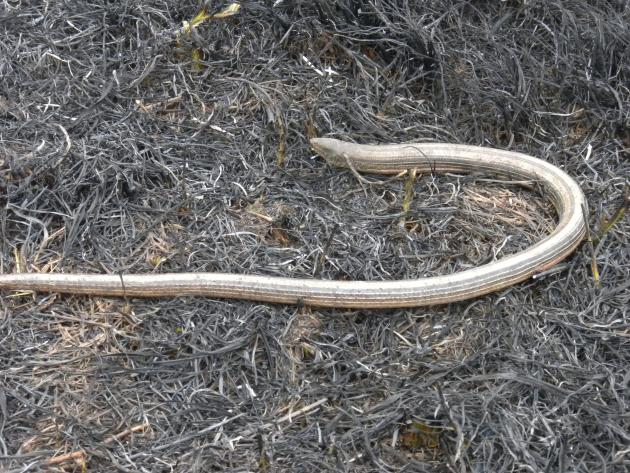Prescribed fire is an excellent tool to stimulate and maintain forage and cover for white-tailed deer. Browse (the leaves and twigs of woody species) and forbs (broadleaf herbaceous plants) dominate the whitetails’ diet throughout their range, and fire can be used to increase available nutrition from these plants in woods and fields. Fire can also be used to maintain relatively dense cover before openness and visibility increase as a result of over-shading and competition.
Frequency of Fire
Forb production is highest in early successional stages where sunlight is not limited. In the eastern US, where rainfall exceeds 30 inches per year, woody species invade post-disturbance and typically dominate within 7 – 10 years, limiting forage available for white-tailed deer. Burning on a 3 – 7-year fire-return interval maintains early successional vegetation, which often provides 2,000 – 6,000 pounds (dry matter) of desirable forage per acre during spring and summer. This forage production rivals that of warm-season food plots and can be maintained at a fraction of the cost of food plots. The exact fire-return interval necessary varies by site and year. When managing for deer, it is desirable to burn when woody encroachment begins to limit forage production. This interval provides not only food, but attractive bedding cover as well.
Season of Burn
The fire-return interval influences vegetation composition and structure more than any other factor. However, timing of burning can also influence vegetation composition and associated structure. Within a given fire-return interval, burning during the dormant season sets back vegetation structure, but often does not change vegetation composition appreciably. Most woody species readily re-sprout following fire in any season. Burning during the growing season (especially late growing season) tends to decrease woody species and promote increased herbaceous coverage. Thus, the necessary fire-return interval to maintain the same vegetation structure and composition may be a year or 2 less following dormant-season fire than growing-season fire. Late growing season fire may encourage more forbs in areas where grasses represent >70% coverage. Increased forb coverage (>30 percent groundcover) is desirable when managing for deer. Browse and/or forbs should comprise 30 – 70% of the groundcover. Grasses are not desirable for deer forage, but some grass coverage provides fine fuel and facilitates burning.Both dormant- and growing-season fire have a place when managing for white-tailed deer. Although various browse species are selected over others by whitetails, browse re-sprouting following burning is highly nutritious. Young growth of any plant is more nutritious, more palatable, and selected by deer over older growth because it is more digestible. Nonetheless, as the growing season progresses and plants mature, forage quality declines.
Animal Nutrition
Fire can also be used in woods and woodlands to increase available nutrition and cover for white-tailed deer. However, burning in closed-canopy forests will do little to improve browse availability or fawning cover. Thus, it is important to open the canopy to allow at least 20 – 30% sunlight into the stand prior to burning. Retention cutting, thinning, and shelterwood harvests are often used to reduce canopy closure and enable more sunlight to enter the stand. Forage production (browse and forbs) in the understory of a closed-canopy forest usually averages 25 – 100 pounds (dry wt) per acre. With additional sunlight, forage production is increased to 700 – 1,000 pounds (dry wt) per acre. It is important to note these estimates only include plants commonly eaten by white-tailed deer, not total biomass. This flush of new vegetation not only increases nutritional carrying capacity, but also can help increase fawn survival by enhancing cover. The soft mast (such as blackberry and blueberry) response following fire also provides increased nutrition for deer.
If burning the woods may involve a little more than what it’s worth, consider this: Burning 4 acres of woods typically provides as much warm-season forage as 1 acre of soybeans. The increased forage following burning will persist at least 3 – 5 years, whereas warm-season food plots have to be planted each year. Any serious deer manager cannot afford to not consider using prescribed fire.






